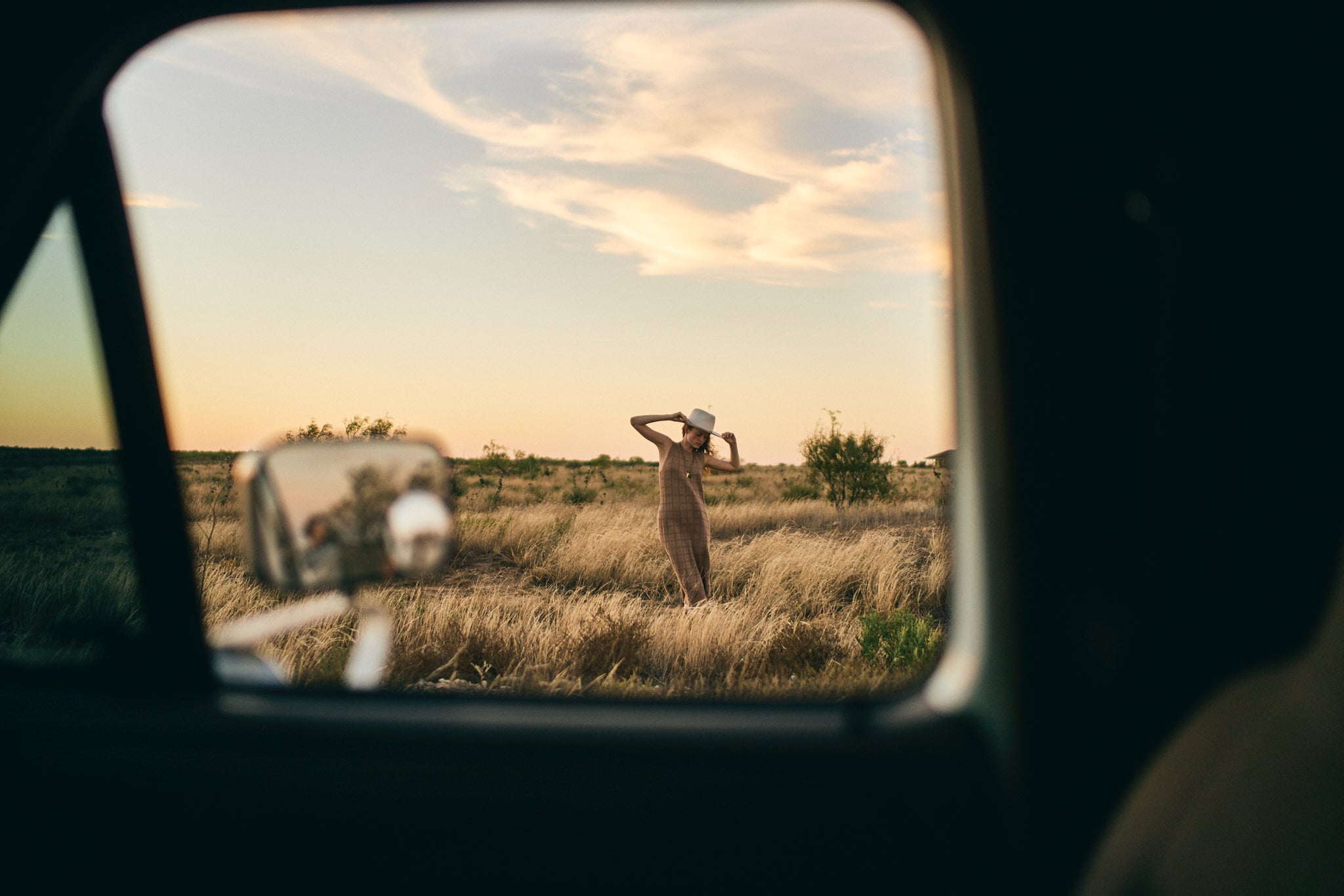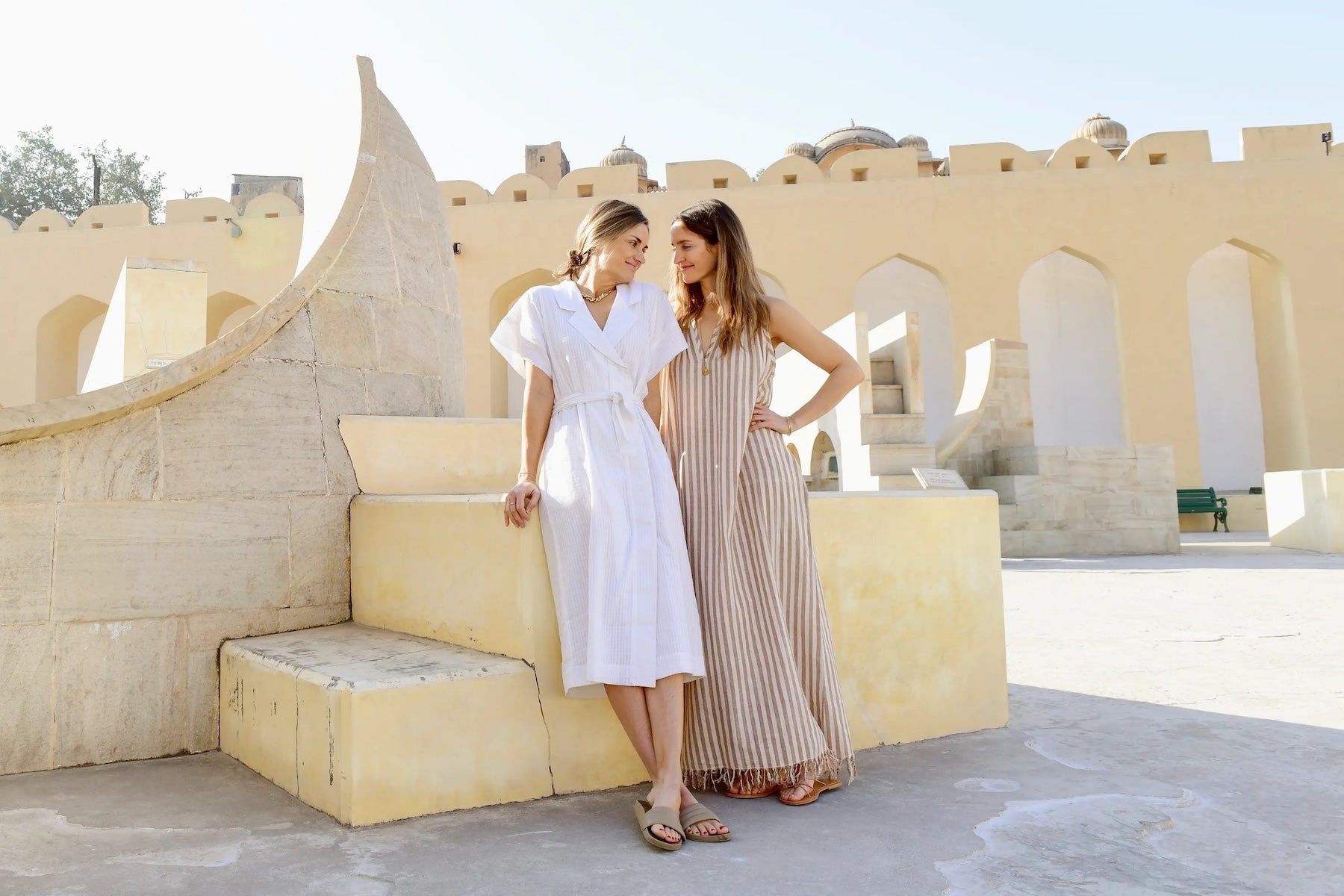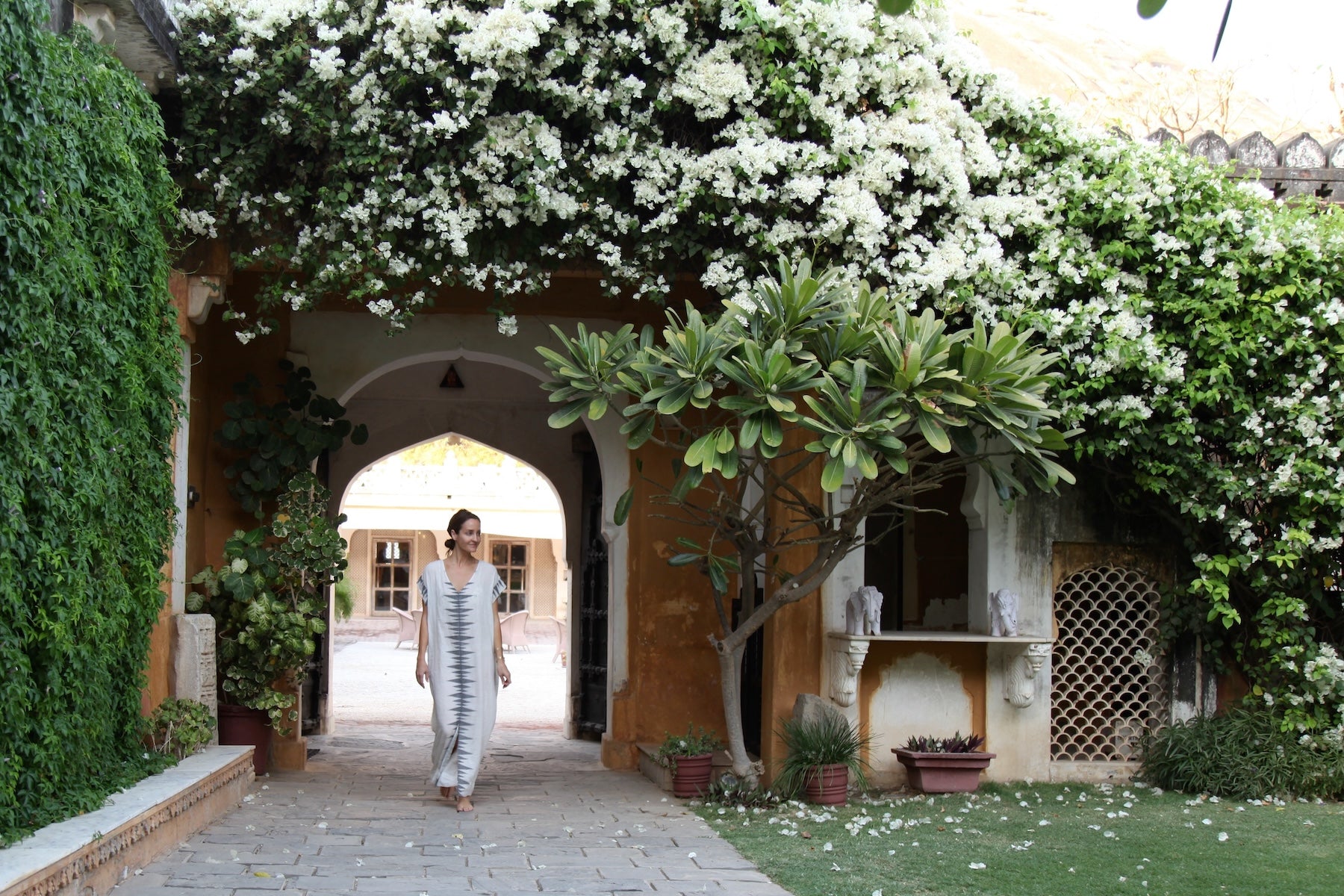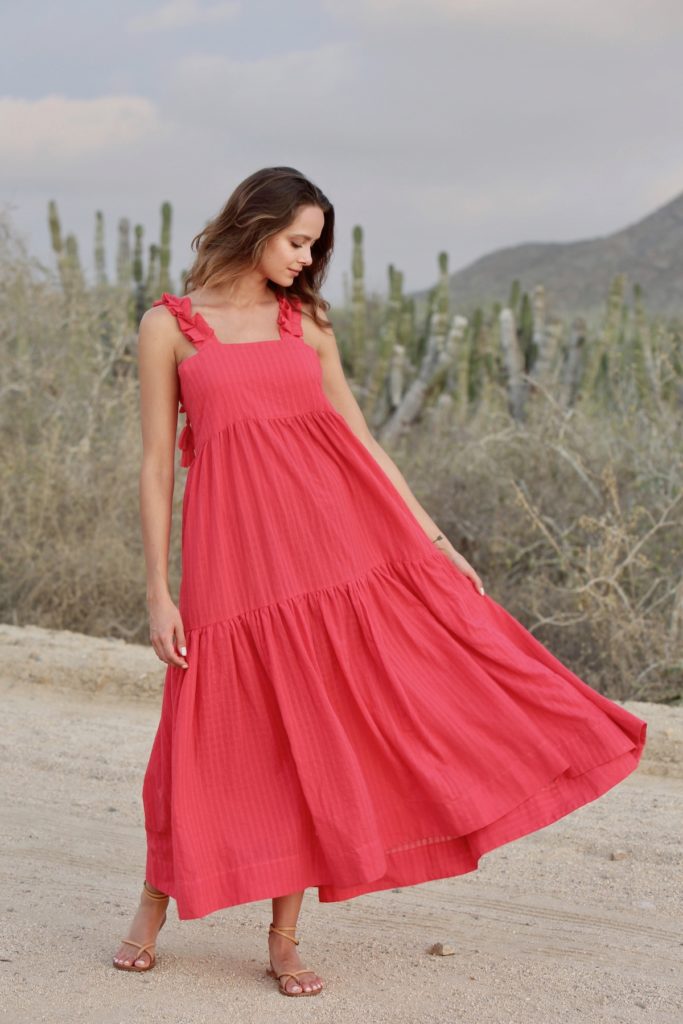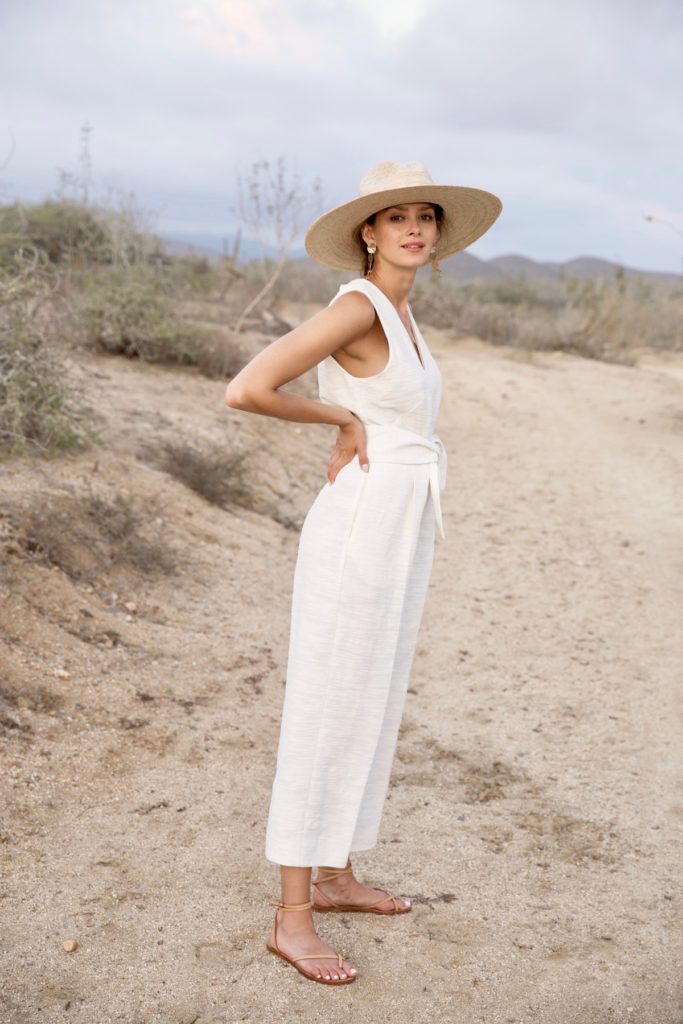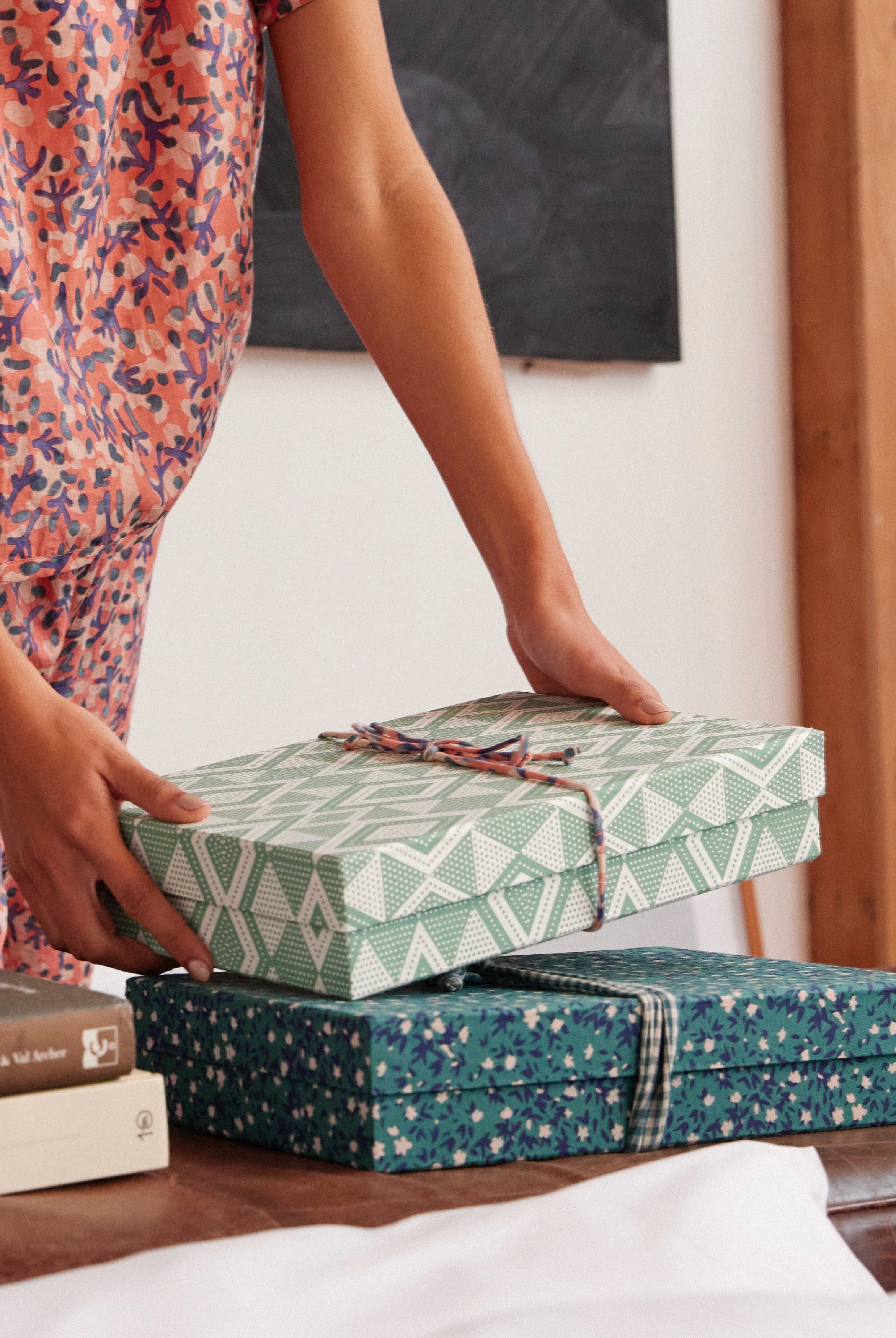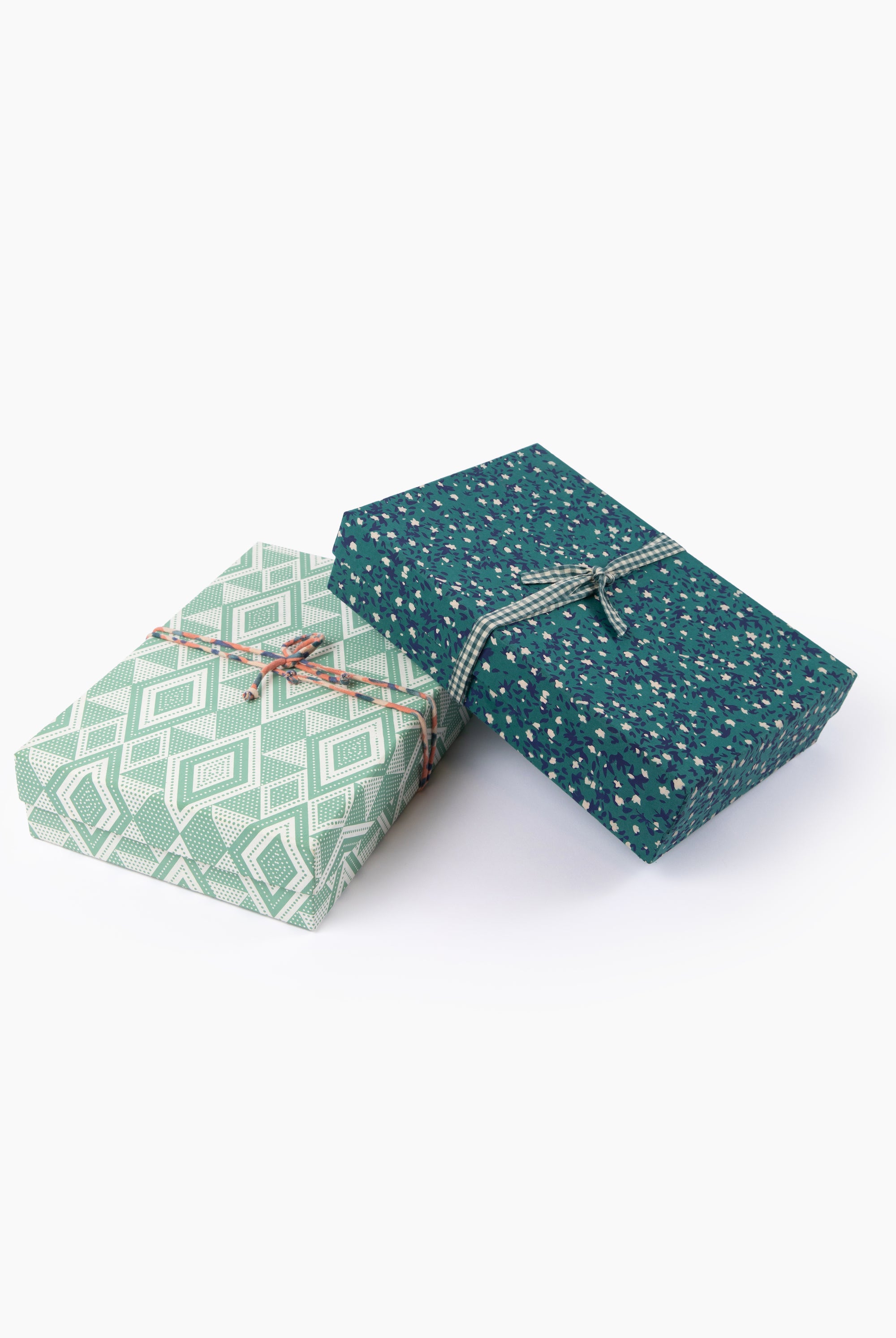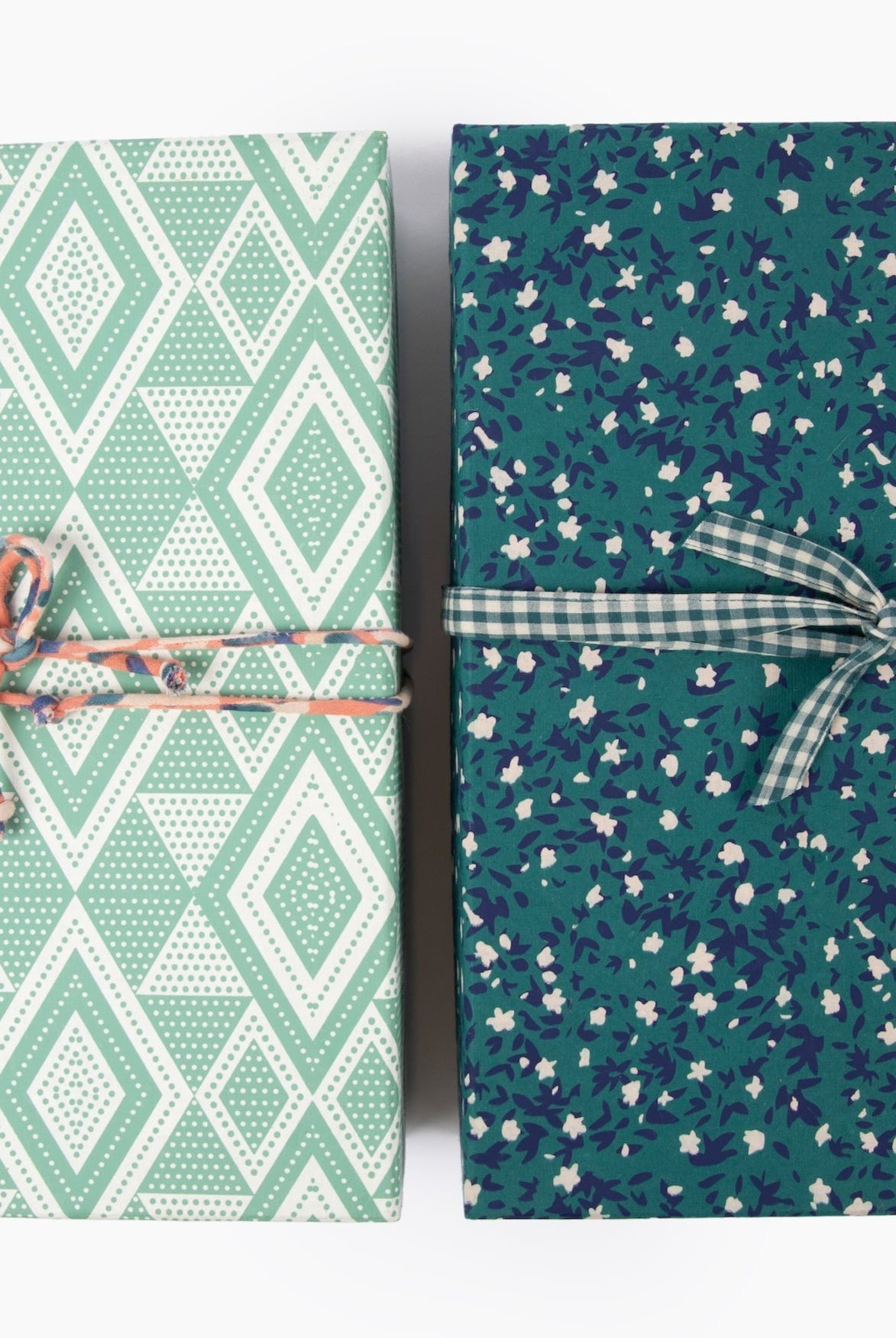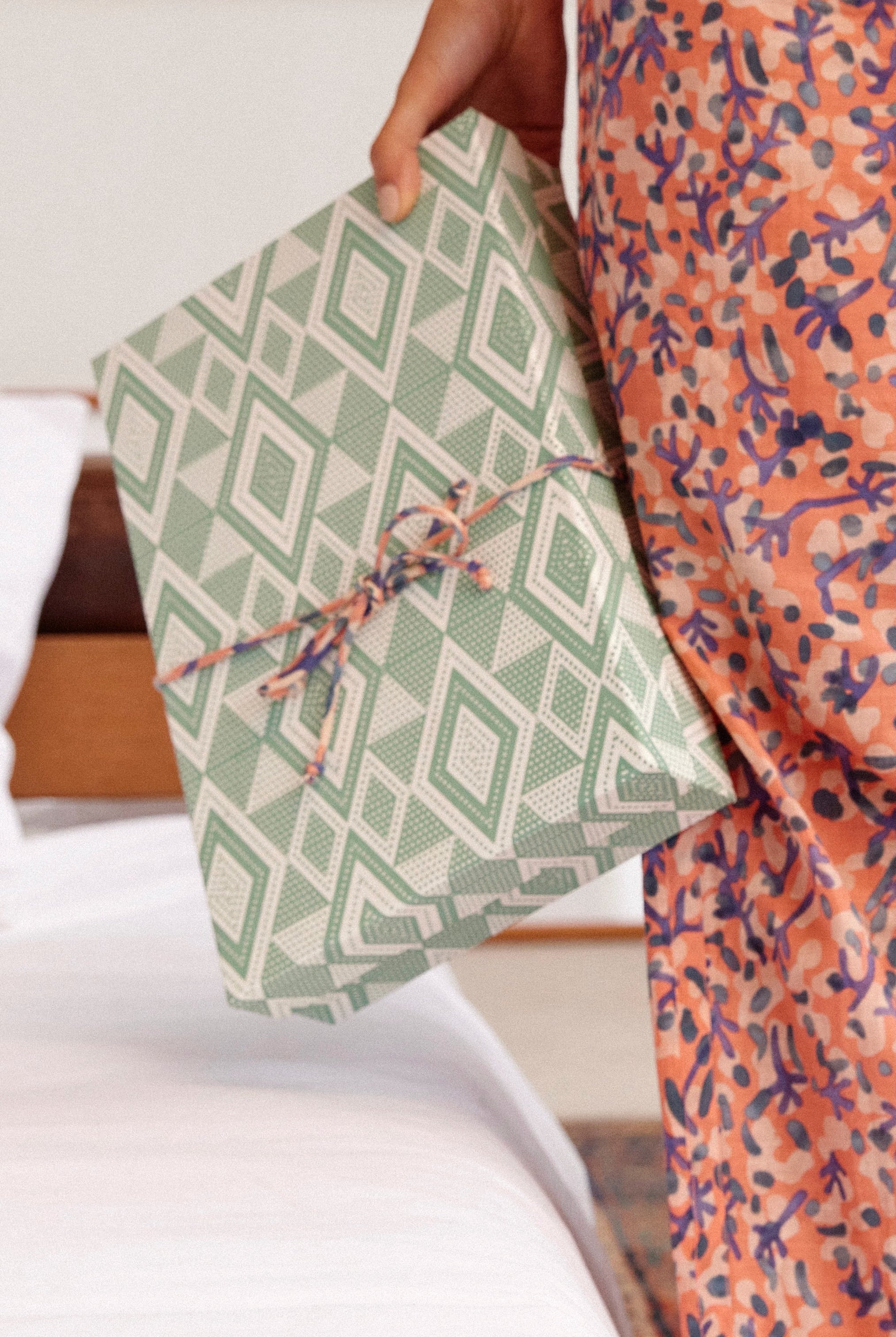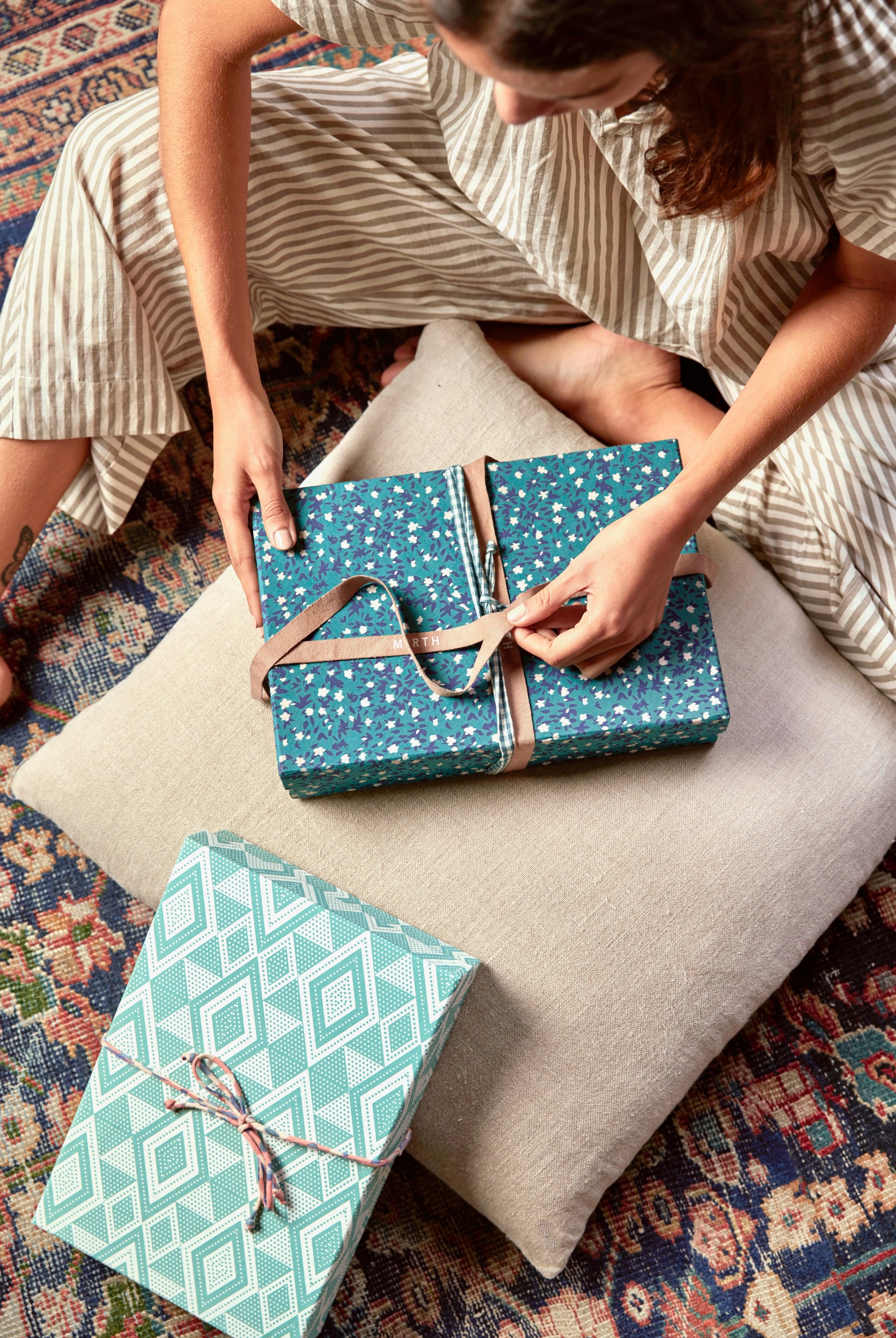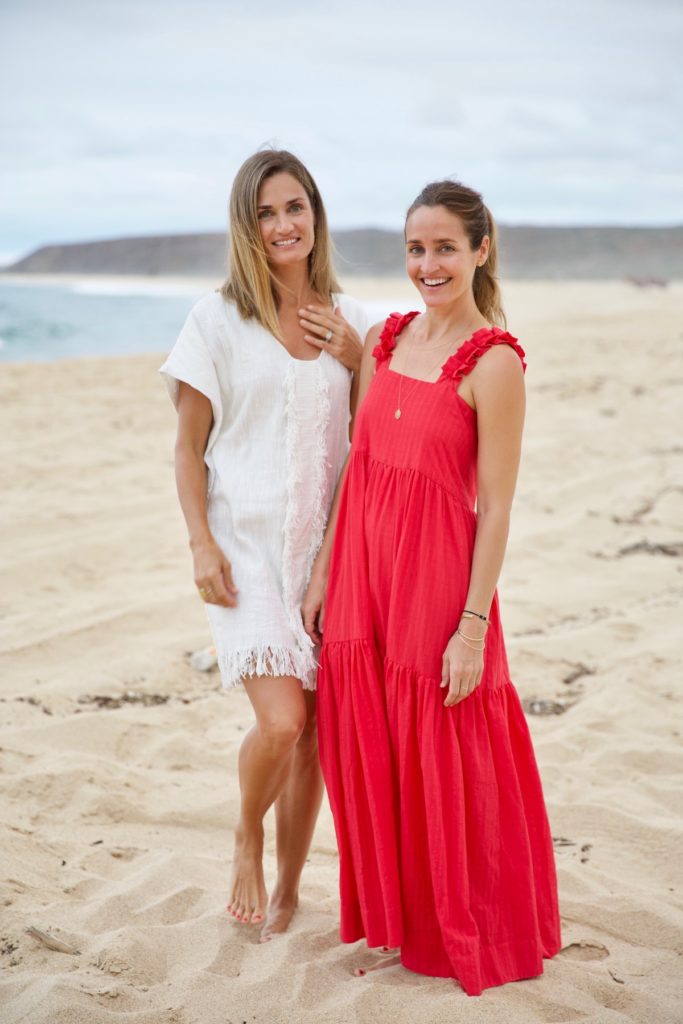
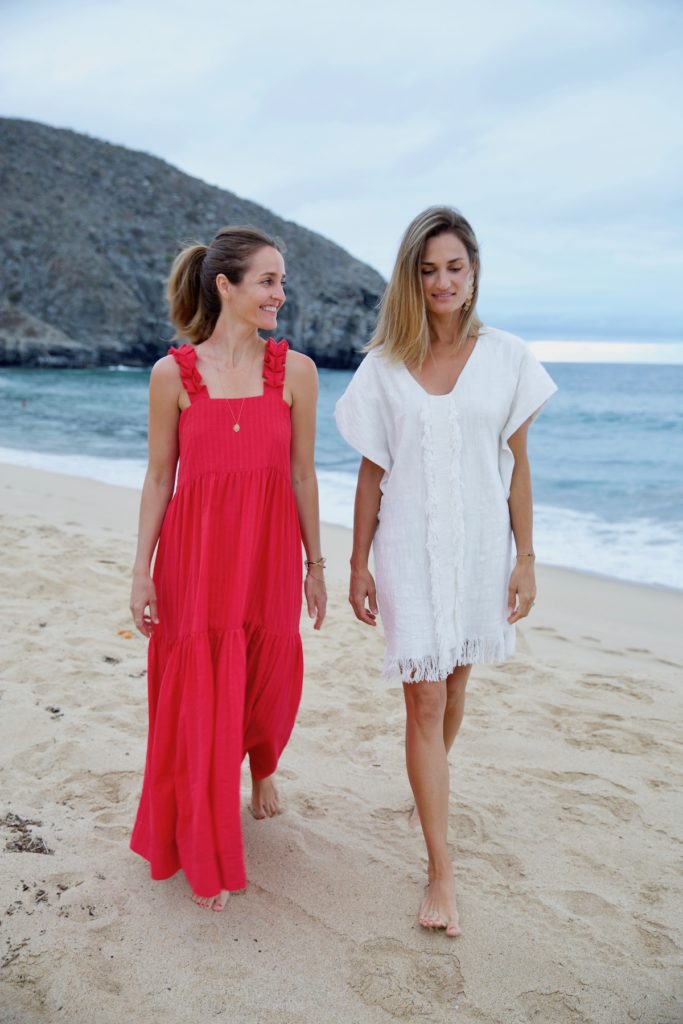

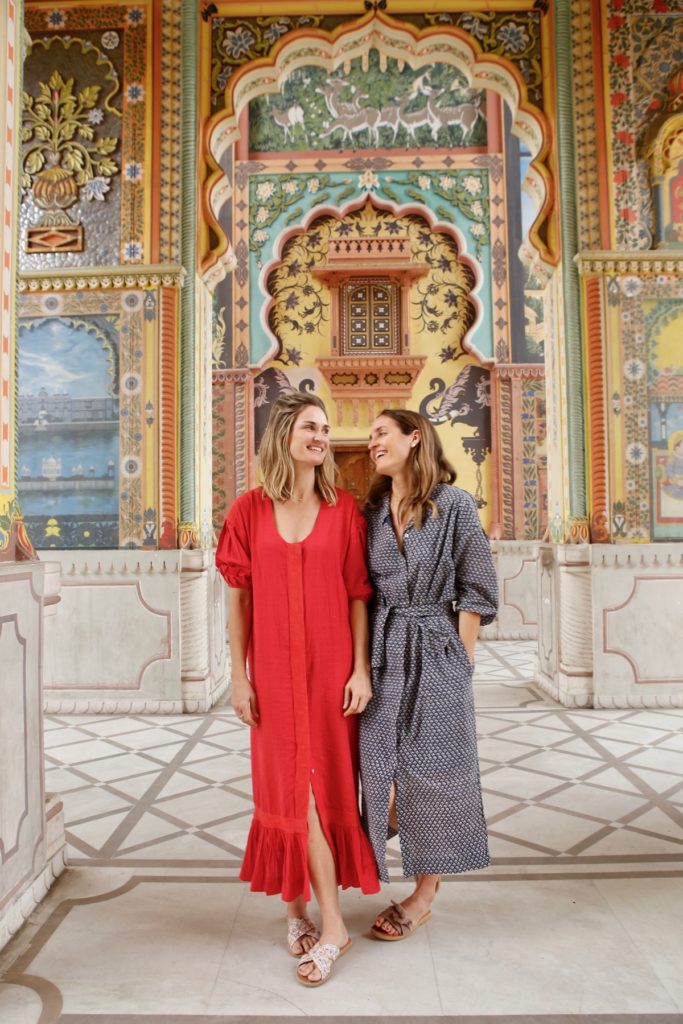
We’re super excited to introduce you to Katie McClure and Erin Breen, the sister-designer duo behind MIRTH. Seems fitting as today is National Sibling Day! These sisters are fellow Houstonians and we are huge fans of their effortless caftans and resort wear pieces that are perfect for warm weather travels. Their designs are also special because they are made with artisan textiles from India, many of which are handmade using techniques that have been passed down for centuries — which are often practiced without electricity. Katie and Erin travel to India twice a year to collaborate on their designs with their artisan partners, and we love following along their beautiful adventures on Instagram. We loved getting to chat with them about how they started their business, India, beauty routines, and more! Get the full scoop below.
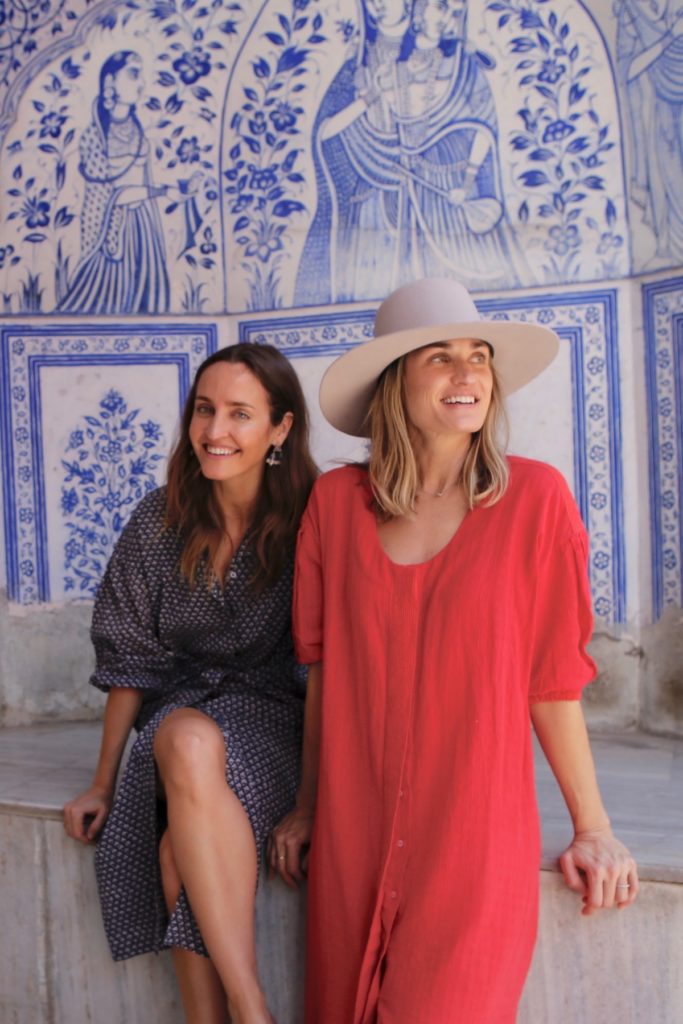

First, a little background! Where did you go to college and what did you study?
Katie – The University of Texas at Austin, Textiles & Apparel
Erin – Elon University, Masters in Education
Are you both from Houston originally?
Our parents are Texans and Erin was born here, but we grew up between West Virginia and Connecticut. It was only a matter of time before we both eventually made our way to Texas.
We’re huge fans of MIRTH not only because of your beautiful designs and mission but also because you two are fellow Houstonians! Tell us a little about your career journeys and how the idea for MIRTH came about.
Katie: We would never have anticipated that our career paths would lead to us launching a fashion brand together. I studied textiles and apparel in college but then pursued jobs in recruiting, events, and sales. MIRTH really came about because of timing and because Erin and I were both facing points in our lives where we were reevaluating our careers and general life plans. I decided to travel to Bali and later to Nepal and India for a refresh. While in Bali, I was wearing and shopping for caftans, which Erin had introduced me to when she was pregnant. I loved the silhouette but didn’t love the fabrics that they were made with. This was ironic because in this part of the world there are beautiful handmade textiles made in workshops by hand using centuries old methods.
Erin: Katie’s travels were happening right around when I was closing my clinic which provided therapy for kids with autism. When she asked me to join her in India, I was all in and ready for a refresh myself. By the time I met up with her there, the idea was brewing in her head. As Katie mentioned, during my pregnancy I wore only caftans because of how comfortable they are, without being frumpy. We started talking more and more about the idea of creating our own line of chic caftans. We started casually meeting with people in India who were in the textiles industry in India and started to realize that we could turn this into a real business.
Katie: We felt like there was an opportunity to merge a reimagined and more tailored caftan design with these amazing fabrics made the “slow fashion” way using heritage methods by really talented craftsmen. There was one dreamy day in India that still stands out as when we solidified our idea. We met people in the textiles industry, scoured basements and markets for antique and new textiles, and then ended the day on an elephant ride in the desert. We were laughing and having this magical moment that felt like we found our calling– it was pure mirth.
We love following MIRTH on Instagram for the incredible behind the scenes footage of your travels in India and your artisan partners. What is the design process like collaborating with artisans in another country?
It’s pretty complicated, as I’m sure you can imagine. More often than not we don’t speak the same language as our partners, and there’s quite a time difference between Houston and India. We have a trusted production team on the ground in Delhi– made up of all women!– that helps us manage communications, production and quality control.
The design process for one season takes over a year and a half from start to finish, and we have about six seasons that we are working on at once. To simplify, there are two main parts to the design process: the fabric and the garment. We design the fabric both in Houston and in India. Sometimes we take an existing design and perhaps change the colors, or sometimes we come up with it on our own. A block print for example, starts with a drawing that we send to the printer via What’s App. The block carver then carves a wooden teak block by hand. Sometimes we make several blocks for 1 design so we can play with scale. Once we have several blocks and ideas, we travel to India to sample in person. It is truly collaborative with the master printers. We try out combinations, colors, base fabrics…. and the printers are sure to tell us when they don’t like something or have a better idea. There are a lot of gestures and head shaking as most of the printers don’t speak English. It’s a ton of work but a ton of fun, with plenty of chai breaks in between. We design the garments in Houston from the ground up. We sample both here and with our factories in Delhi.
You initially launched MIRTH as a line of caftans, which have become quite trendy. What was it that drew you to that silhouette? What key design elements do you keep in mind when creating your collections?
Erin discovered her love of caftans while she was pregnant with her son years ago. They are comfortable but also make you feel pulled together– but not too together. It’s an easy and casual style, which is basically our personal style and design goal in a nutshell. When we’re designing new pieces, we gravitate towards silhouettes that are forgiving and not super fitted, but structured in a way that makes you feel elegant and sophisticated. We want our customers to be able to wear MIRTH pieces in multiple scenarios, whether on a beach or out at a nice dinner. We also value the quality of our fabrics and consider our pieces investment items that you won’t grow out of. We have many mother-daughter customer duos because our styles are timeless. Our own mom is our number one fan — she’s always wearing MIRTH!
Most MIRTH pieces are handmade in some way and your Spring collection has pieces made with natural Indigo dye and a new hand block print pattern. Can you tell us a little about the fabric and what makes it so special?
We’re very excited to launch our first Indigo collection this season. The indigo is a natural dye derived from the neel plant, giving it special qualities. These block printed pieces are truly works of art. First the pattern is hand block printed by master printers in Bagru, India using the dabu method, where mud is first stamped and then sawdust is applied to create a barrier before the fabric is dipped in the indigo vat. The workshop has a 12’ deep vat in the ground where the cloth gets dyed (I have almost fallen into this vat way too many times). After dyeing, the mud and sawdust are washed off, the fabric dries in the fields and then goes through a series of boiling, washing and drying again to help set the dye. The color varies a bit from piece to piece as, do the stamped patterns since the mud and sawdust create an imperfect shape with each stamp. The printed areas have a beautiful marbled look as some of the indigo seeps in creating a visual texture. The items dyed with indigo need a bit of extra care so they don’t transfer dye to skin or lighter fabric colors, but we think this is all part of the amazing story and uniqueness behind the pieces.
We love that you are embracing slow fashion in an age of fast fashion and “I want it now” — but of course slow fashion isn’t easy. Can you speak to the challenges you face with running a slow fashion company and what makes it worth the extra effort?
Social impact is at the heart of why we started MIRTH, and it’s very important to us that we are using ethical production practices and providing artisans with a dignified income. We try to use sustainable practices whenever we can, and we make sure to see every step in our production process firsthand. Our guidelines and criteria make the design process more timely and more costly, and of course producing in India with artisans in remote areas is also very difficult in terms of communication, quality control and timing. If something along the way in the production process goes awry, which it does 100% of the time, it’s not an easy fix — this means production delays and sometimes a change in the final product. We have to have more flexibility and pivot if needed– and generally our customers understand this. We often promise a collection launch date but then have to push for a week or two– this is why!
At the end of the day, when we visit our artisan partners in India and see the impact MIRTH is having on these communities, it makes it all totally worth it. It’s another reason why we try to go as often as we can– there is great value in meeting face to face and seeing their challenges in the production production first hand. We’ve seen the impact on these communities from the opportunities that we are providing, which is such an amazing feeling. And then to see our customers in the U.S. wearing those special fabrics that we witnessed being handmade in the fields of India — it’s truly magical.
Tell us a little about the inspiration behind your current collection and your favorite piece(s) available right now?
Our spring collection is dedicated to travelers. As travelers ourselves, we gravitate towards pieces that transition well for multiple occasions and that are breezy and easy to pack while still looking sophisticated. We’re really proud of this collection and it’s hard to pick favorites, but the indigo pieces are really special and we love the grenadine color which is our brightest hue to date.
What is on the horizon for MIRTH? Any dreams or goals for 2019?
We’re really excited about upcoming partnerships on the horizon with brands that are based across the country — stay tuned for details! One of our goals is to continue visiting our retail partners in cities across the country to establish a stronger presence in those communities. We always love meeting new and old customers, and we know how important that facetime interaction is. We’re excited about some pajama sampling happening now and a new way of re-purposing some of our fabric scraps.
Describe the MIRTH woman:
The MIRTH woman loves to be comfortable and stylish at the same time. She travels, values good design, and, one of the neatest things, she ranges in age — from 20s to 70s. We love this! And, perhaps we’re biased, but our customers have proven over and over again to be incredibly kind and wonderful people at heart. We are blown away by how caring and nice our customers consistently are.
If you could see anyone wearing MIRTH who would it be?
Leandra Medine of Man Repeller.
Pros and cons of operating a business out of Houston:
Houston has such a supportive community that rallies around local businesses. We’ve been able to meet and collaborate with other women in creative industries here which is always an uplifting experience. It’s sometimes a challenge to not be located in L.A. or New York where there are so many opportunities for fashion brands. Our showroom is based out of L.A. and we try to visit New York as often as possible for market and editorial meetings, but it is still difficult sometimes to be far away from industry happenings.
How would both of you describe your personal style in a few words?
Erin: Comfortably chic.
Katie: She stole mine. Simple and imperfect.
You two are four years apart. Were you always close growing up? How are you alike and how are you different from one another?
Erin: We were very close when we were young, took a break from each other during our teenage years, and became close again as adults. We are very different! But I think we complement each other well.
Katie: I stole clothes from her closet most days during her teen years, hence the sister argument. She had a really rad Contempo Casuals/Limited wardrobe in the ‘90s. I always tried to emulate her style, which continued into adulthood with the caftan concept! I was more awkward and studious and Erin was just the coolest. Ha, maybe we are still that way?
Favorite self-care practice:
Erin: I’ve been meditating for a while now and it has truly changed my life. If I miss a day, I definitely feel it.
Katie: I can’t go to bed without a shower just before, followed by my 7 step skincare routine.
Favorite place to visit in India and why:
Erin: It’s really hard to choose one. I love The Rambaugh Palace because of the food and the palm reader, K.K. Jaipur is full of gems, especially where we stay, Jobner Bagh. Udaipur is probably the most beautiful place we’ve been to in India.
Katie: Everywhere is so different and will leave quite an impact on you for different reasons. The region of Rajasthan will truly take your breath away.
If you could describe India in a sentence or two to someone who has never been, what would you say?
Erin: I always say it’s controlled chaos.
Katie: A beautiful mess that will change you forever.
You are both skincare connoisseurs. What are your favorite products and brands?
Erin: I try to use natural and organic as much as possible. I love May Lindstrom and Drunk Elephant.
Katie: Biologique Recherche P50, Vitner’s Daughter Active Botanical Serum, everything by Susanne Kaufman.
You make the very long trip to India twice a year and travel quite a bit for both personal and work. What are your go-to packing tips?
Erin: “Bed in a bag” for the long flights, which consists of a normal size pillow and blanket. Luckily we mostly wear our caftans when traveling and they’re easy to pack!
Katie: Bring a battery pack everywhere. Pack in ziplock bags. Limit the number of shoes– you never need as many as you think and they weigh a ton.
Always in your carry-on?
Erin: Pillow, blanket, cashmere wrap, book, hand sanitizer and all of my vitamins
Katie: Root veggie muffins from Vibrant in Houston. (The. Best. Plane Snack.) Ditto to the full size pillow– essential for sleeping in economy! All you need is a window seat and you can prop your pillow up and lean your whole body against it and sleep. A small neoprene lunch bag + a sweat proof ice pack to keep string cheese, veggie wraps, blueberries, and carrots. We like to avoid airplane food!
Your perfect day in Houston would include:
Erin: A morning walk around Hermann Park followed by breakfast at Vibrant and playing outside with my son. Afterwords I would make a visit to Milk and Honey and then end the evening by having friends over for dinner.
Katie: An early morning Ryde class, coffee at Blacksmith, a Menil visit and picnic outside, then winding down with dinner at home. We love picking up steaks from B&B Butchers to grill at home with a bottle of natural wine from Vinology. And maybe a red velvet Crave cupcake for dessert if I’m really splurging.
Next place on your travel bucket list:
Erin: I’m dying to go to Mexico City!
Katie: I just got back from CDMX and vouch for how great it is! Now sights are set on Japan. The Azores are high on the list, too. Also Cuba. I could go on...




